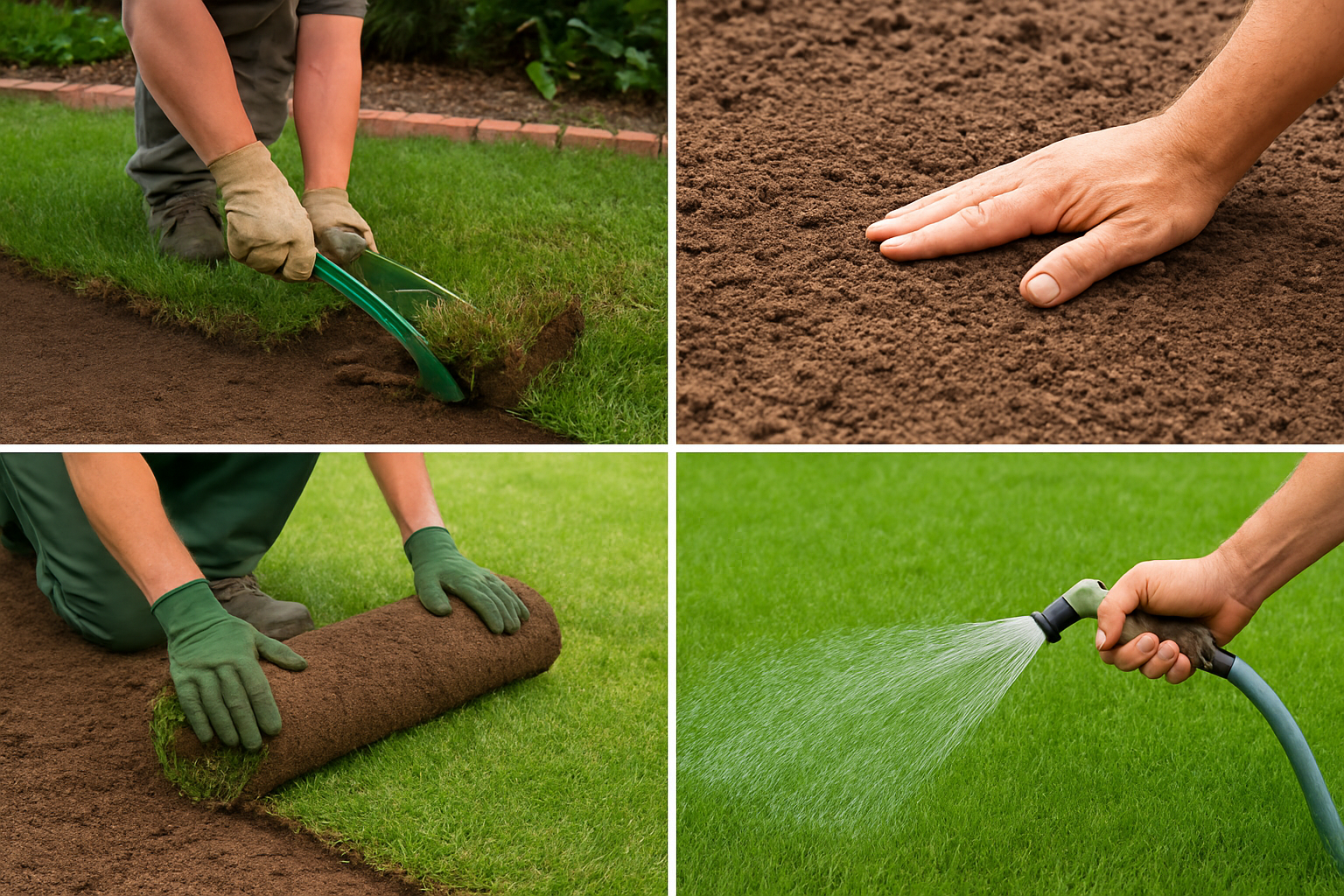
Laying turf gives you an instant, lush lawn — when done correctly. With good preparation and attention to detail, you can ensure your turf takes root, grows strong, and looks great for years.
Order your turf in advance, so it arrives just before you’re ready to lay it
Check delivery timing and storage: turf should be laid the same day to avoid drying out
Measure your space carefully so you order the right amount (plus a little extra for cuts/edges). Why not use our handy turf calculator
Use a turf cutter, shovel or spade to clear sod, weeds, stones, roots, etc.
Loosen and level the soil
Dig or rotovate to 15–20 cm depth
Add our turf base (our mix of compost and whin dust) to fill low spots and improve fertility
Firm the surface
Using feet or a light roller, gently firm the soil so it’s stable (but not overly compacted)
Avoid foot-prints deeper than about 1cm
Begin along a straight edge (house wall, path, etc.)
![]() Lay the rolls tightly together (but don’t stretch them)
Lay the rolls tightly together (but don’t stretch them)
Stagger the joints — as with bricks — to avoid long seams
Use a sharp knife to cut to fit edges and curves
After laying a roll, press it down gently to ensure good soil contact
Avoid walking directly on the fresh turf — use planks, sarkin boards or stepping stones to distribute weight
![]() Immediately after laying, water thoroughly — the new turf and soil below should be moist
Immediately after laying, water thoroughly — the new turf and soil below should be moist
Continue watering regularly (usually daily or as required) until the turf is established
![]() Avoid overwatering (which can rot roots) and underwatering (which can dry out turf)
Avoid overwatering (which can rot roots) and underwatering (which can dry out turf)
Monitor moisture and rainfall — adjust watering accordingly
Wait until the turf is fully rooted before mowing
Set your mower to a high setting on the first cut to avoid stressing the grass
Gradually reduce mowing height over subsequent cuts toward your desired level
Maintain a regular mowing and watering regime
After a few cuts and some growth, your lawn will settle into its full look
Fertilise periodically to keep growth healthy
Aerate, scarify, and topdress as needed (in line with your lawn care plan)
Avoid heavy use for early weeks while roots are developing
Deal with edges and transitions carefully — install edging or barriers if necessary
Watch for pests, disease, or patchiness, and reseed or repair promptly
